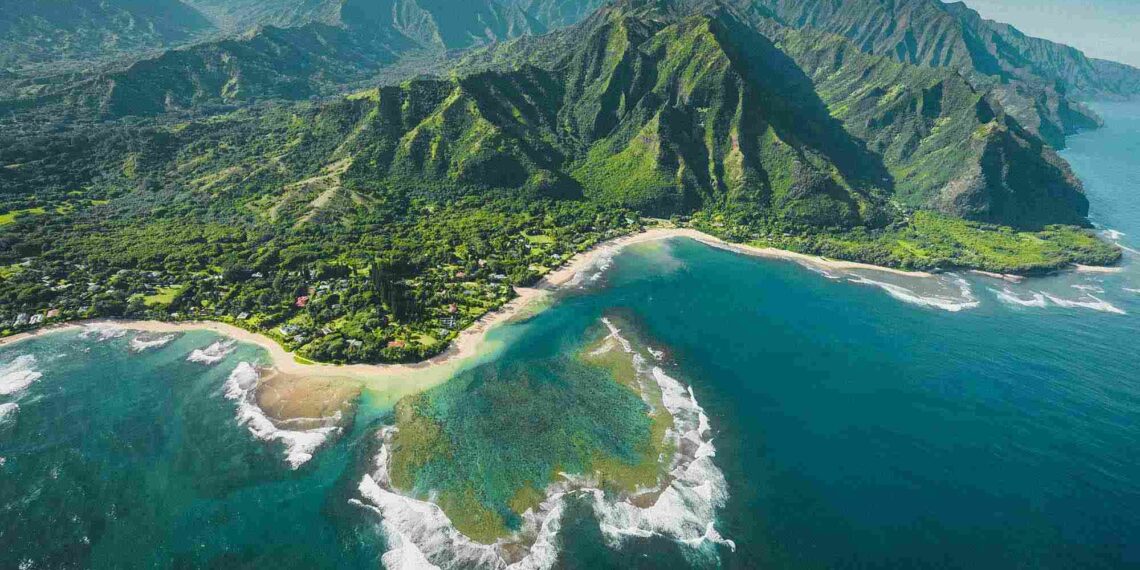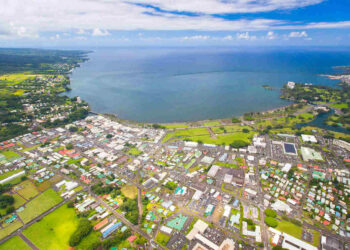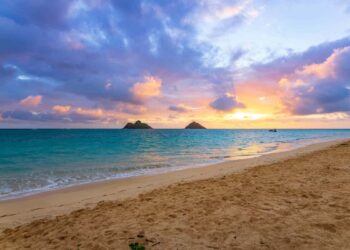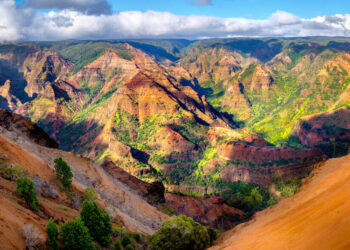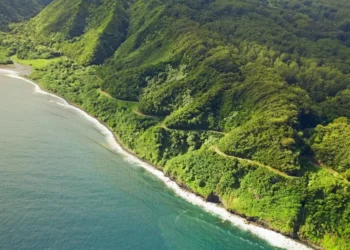Imagine a land where the ground shakes faintly at dawn, where the wind carries salt and the scent of green, and where the past clings to cliffs and beaches. Hawaii’s islands aren’t just spots on a map—they’re pieces of a story, shaped by fire and water, linking today to long ago. Here are ten that stand out, each one a thread in the fabric of this ocean-bound world, laid out plain and true.
10. Waikiki Beach, Oahu
Waikiki Beach sits along Honolulu’s south side on Oahu, a long stretch of sand under Diamond Head’s old slope. It was once a place for Hawaiian chiefs, and you can still feel that history in the air. The water’s calm, good for learning to surf, and the path nearby buzzes with people selling food and trinkets. At night, lights come on, brightening the waves. If you’re in the area, stop by late in the day—the glow off the water sticks with you.
9. Haleakalā National Park, Maui
Haleakalā rises high on Maui, topping out past 10,000 feet, a big chunk of rock with a wide crater at the center. The sun comes up strong there, lighting the rough ground in shades of orange and gray. Trails cut through, passing spiky plants called silverswords that grow nowhere else. It’s cold and quiet up top, with just the wind to break the stillness. Get there early if you go—the morning view’s worth the climb.
8. Na Pali Coast, Kauai
The Na Pali Coast runs along Kauai’s northwest corner, a line of steep cliffs dropping into the sea. The only way in is by boat or a tough trail that winds along the edge. You’ll see waterfalls spilling down from high up and beaches tucked out of reach. It’s a rugged place, full of old stories. If you’re near Kauai, take a look when the weather’s clear—it’s a sight that stays sharp in your mind.
7. Hawaii Volcanoes National Park, Big Island
On the Big Island, the Volcanoes National Park shows off what’s under the ground. Kilauea and Mauna Loa are alive, with dark lava fields spreading out and steam rising from cracks. There’s a tunnel made by old lava flows, cool and dark inside, and sometimes you can spot glowing lava after dark. The place feels restless. Head there at dusk if you can—the red light against the black is something else.
6. Pearl Harbor, Oahu
Pearl Harbor lies on Oahu’s south shore, a quiet spot with a big past from 1941, when war hit hard. The USS Arizona’s still down there, marked by a white platform, with oil bubbling up slow. Nearby buildings hold things from that day—papers, tools, photos—telling what happened. It’s calm now, but heavy. If you’re around, go late in the day—the stillness sinks in deep.
5. Road to Hana, Maui
The Hana Highway cuts through Maui’s east side, a narrow road twisting past trees and cliffs. Waterfalls drop into pools along the way, and there’s a black sand beach near the end. The drive’s tricky—tight turns, old bridges—but it shows off the island’s wild side. Take it slow if you’re headed that way; the stops make it worth the time.
4. Waimea Canyon, Kauai
Waimea Canyon sits on Kauai’s west side, a deep cut in the earth with red and brown walls. You can look out from the top and see it stretch wide, or walk a trail to a waterfall inside. The light changes how it looks through the day. It’s a big, rough mark on the land. Stop by in the afternoon if you’re there—the colors stand out then.
3. Hilo, Big Island
Hilo’s on the Big Island’s east coast, a small town by a bay where rain falls often. The streets have old buildings from when it was a trading spot, and a waterfall—Rainbow Falls—is close by, kicking up mist. The market’s full of local stuff—fruit, crafts—a slice of everyday life. If you’re passing through, drop in when the sun’s out; it’s a steady, simple place.
2. Lanikai Beach, Oahu
Lanikai Beach is on Oahu’s east side, a thin strip of soft sand with clear water. Two small islands sit offshore, easy to reach by kayak, quiet and empty. It’s out of the way, no crowds or noise, just the sea and the shore. If you’re nearby, go early—the light on the water’s clean and sharp.
1. Kalaupapa Peninsula, Molokai
Kalaupapa sticks out from Molokai’s north coast, a flat piece of land boxed in by tall cliffs. It used to be a place for people sent away, and you can see their old church and graves there now. Getting down’s hard—mule ride or a steep walk—and the sea’s always loud below. It’s a lonely spot with a lot behind it. Visit late in the day if you make the trip; the quiet hits different then.
What Hawaii Holds
Hawaii’s a mix of things—heat from below, water all around, pieces of the past in every corner. Oahu’s got the busy spots and the heavy ones, Kauai and Molokai keep it rough. The Big Island moves with fire, Maui rolls with turns. Each place adds something—a sound, a feel, a mark. Walking through, you catch the shift from ash to sand, the weight of what’s been.
Tips for Going
Think about when you travel—spring or fall keeps it less packed—though it’s good anytime. Start in Honolulu or Kahului, then hop between islands by plane or boat. A car’s handy for the back roads; it lets you see more. Hawaii’s not just a stop—it’s a place that sticks, with air full of salt and ground that tells you it’s alive. Check these ten out; they’ve got something real to say.
